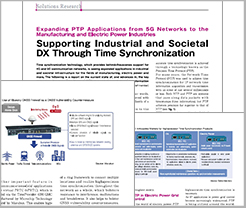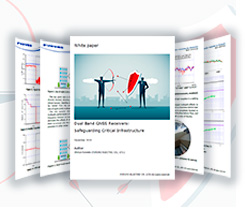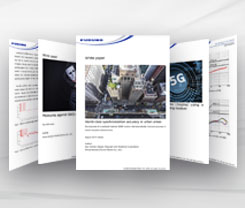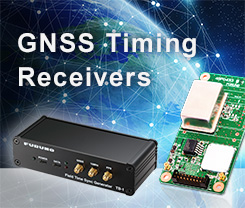Column
The Long History of One Second (Part II)

Just as it's impossible for a person to lift up the chair on which they are currently sitting, it's impossible to utilize a mathematical theory as reliable, conclusive evidence if that theory is still in the process of being proven. As follows, the movements of our planet cannot be measured using any unit of chronological measure that is based on that same planet's movements. Following the creation of the atomic clock in the 1950s, which became a new standard, it finally became possible to accurately measure and record the earth's movements.
In part I of this article, we explored how the earth's slightly elliptical orbit and tilted axis of rotation relative to the sun result in surprisingly large variations in the length of a day throughout the year. In part II, we'll take a look at how variations in the earth's rotation tie in with the concept of a "leap second," as well as how precise measurements of that rotation can be accomplished.
Surprisingly Large Inconsistencies in a Day's Length
The International Earth Rotation and Reference Systems Service (IERS), which is headquartered in Paris, analyzes observational data sent from countries around the world, utilizes those results to create parameters, results data and similar which accurately express the earth's rotational motions, and publicizes that information to make it accessible to everyone. They factor in said information to determine the exact length of a day and create net rotational speed parameters. Let's start by viewing a graph.
The pink lines show roughly 60 years' worth of changes in the earth's rotational speed, starting from 1962. A considerably distant celestial object is used as a reference point to determine the value for "length of day" (LOD), or the time required to complete one rotation of earth.* This is compared with the 86,400-second length of a day as defined using an atomic clock. The difference between these two is displayed on the graph, with the Y axis showing variations by millisecond units (one-thousandth of a second).
* In actuality, additional rotation of the earth based on the distance traveled in orbit around the sun is required to complete a full rotation. As follows, LOD is actually slightly more than a full rotation. A single year comprises precisely 365.2422 days, so LOD refers to the time required to rotate 360.002738 degrees, which is calculated as 360 + (1 ÷ 365.2422).
The Earth: Raw Egg or Hard-boiled Egg?
As many readers know, it's possible to confirm whether an egg is raw or hard-boiled by spinning it on a tabletop. Those who are familiar with the principle can make such a determination through mere physical contact: when rotational force is applied through spinning of the egg, a raw egg's yolk, and white exhibit fluid motion, causing wobble. The same can be said of the earth's wobble, caused by fluid movement between inner and outer layers in response to rotational forces.
Tidal cycles in the sea occur in sync with the orbit of the moon over a roughly 28-day cycle, and, of course, annual cycles are defined by the four seasons. In addition, many believe that an additional cycle which occurs over a period exceeding ten years is caused by fluid movements within earth's mantle, but this mechanism has yet to be proven definitively. Because such changes are difficult to predict, humankind has settled on adapting their lives to the changes instead.
Looking again at the graph, we see that the LOD deviation value is above zero for a majority of the six-decade period, which means that the total time of each day exceeded 86,400 seconds. This brings us to the concept of a leap second. Introduced in 1972, the leap second is utilized to ensure that no major disparity occurs between Coordinated Universal Time (UTC), which is based on atomic clock time and utilized widely by society today, and Universal Time (UT1), which is measured based on the actual rotation of the earth. A leap second has been introduced 27 times since its initial adoption, and in all cases a second was added rather than taken away. However, despite the graph showing most of its values in the positive (plus) region thus far, separation is growing increasingly large.
Debating the Necessity of Leap Seconds Following the Shortest Day
Since the year 2000, increasing numbers of days have had LOD deviation values that fall below zero—into the negative, in other words. Moreover, new record lows for these values are being registered one after the next. Most recently, on June 29, 2022, the shortest day in recorded history was measured at 1.6 milliseconds below the standard 86,400-second length. In some locations, this phenomenon was significant enough to be reported in the news.
Regarding the leap second, debates are underway about the possibility of suspending or abandoning this approach due to the potential, unpredictable effects such chronological irregularities may have on computer systems, networks and the like. If another shortest day makes it onto the record books, debate will likely pick up again and make the news on a wider-reaching scale.
In the future, if the earth's rotation were to continue speeding up, thus decreasing the LOD value, the 27 seconds added thus far via leap seconds would eventually be brought back down to zero—although this is unlikely to occur for decades.** However, even though over the decades are required for such a change, we will likely lose familiarity with the leap second system and all relevant knowledge.
** Time measurement based on International Atomic Time (abbreviated as "TAI" based on the original French, temps atomique international) began on January 1, 1958. When the first leap second was introduced in 1972, ten additional seconds were added retroactively for the missing years. Therefore, the total balance is 37 seconds (TAI-UTC).
Observing Rotation Using the VLBI Positioning Approach
When determining LOD deviation values to calculate variations in each day's length down to 1/1000th of a second, it is necessary to use celestial bodies that are significantly distant from the earth as reference points for rotational measurements. This is made possible by VLBI, which refers to the somewhat wordy and confusing-sounding concept "very-long-baseline interferometry." Persons familiar with the VLBI concept may know it as a technology that enables precise measurements of distances, from different continents, with accuracy down to the level of several millimeters. Personally, I recall watching, about fifty years ago (during my childhood days), a TV commercial from a measuring instrument manufacturer about VLBI. That's one way of telling you that the technology has been around for some time now.
A quick Internet search will readily link you to any number of websites with more detailed explanations accompanied by helpful diagrams, but to summarize here in simple terms, VLBI can be described as follows:
- Radio-wave noise from a distant celestial body is chosen.
- The waves are measured from two points on earth that are extremely far from each other and recorded with synchronized time stamps.
- Measurements of the waves from both points are compared side-by-side to determine the time disparity at their point of overlap.
- Corrections are made for any delays caused by atmospheric factors.
- The time disparity is multiplied by the speed of light to determine the difference in distances from the celestial object used as the reference point.
By utilizing the VLBI method to take measurements based on many different celestial bodies, and then factoring in planetary rotation during analysis, researchers calculate distances (positional relationships) for each of the point pairs in question, enabling them to generate reliable, measured information. This reliable information can, in turn, be used to determine in precise terms the direction to each celestial object which was used as a reference point. In principle, by measuring based on those three points, it is possible to identify with high accuracy the direction from which the radio waves are arriving, and using this as a foundation, researchers can continually measure LOD values with high precision from day to day. Then, based on known rotational (axial) wobble, it becomes possible to measure positional relationship values with greater precision, the results of which can be used in turn to more precisely measure wobble... and so on. This continuing, endless cycle of advancement in measurement precision helps us maintain accurate coordinate and chronological measurement results over time.
Modern-day society, with its wide-ranging technologies in fields such as communication, broadcasting, electric power, and finance, requires such high levels of chronological measurement accuracy that reach and even exceed millisecond-level precision. Moving forward, if humankind hopes to expand its activities out to the moon and other locations in space, even greater precision will be needed.
Measurements are used to establish new standards, and those standards are then utilized to achieve more precise measurements. This cycle has repeated itself throughout our long history and resulted in the accumulation of new technologies and techniques, all of which facilitate an increasingly wide variety and scope of human endeavors.
Writer introduction
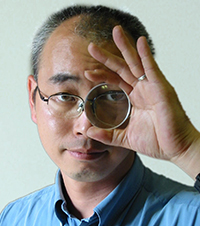
Mr. Mitsunari Kita Science and technology writer
Born in Ishikawa Prefecture in 1964. Based on his experience in covering industrial technology, cutting-edge technology, and space development, he is passionate about unraveling and conveying difficult topics in an interesting way to people of all ages, from children to senior citizens. From 2009 to 2014, he was a member of the editorial board of "JAXA's," the official magazine of the Japan Aerospace Exploration Agency. Author and co-author of the following books: 『あなたにもミエル化? ~世間のなりたちを工学の視点から~』(幻冬舎mc)、『私たちの「はやぶさ」その時管制室で、彼らは何を思い、どう動いたか』(毎日新聞社)、『東京大学第二工学部70周年記念誌 工学の曙を支えた技術者達』(東京大学生産技術研究所) etc.,
* All registered trademarks used herein are the property of their respective owners.
Pick up
Column
FURUNO Column
-
Common Problems That Affect GPS/GNSS Time Synchronization

-
How to select GPS/GNSS antennas for time synchronization

Column by Mr. Mitsunari Kita (Science and technology writer)
-
The Observation Network Created by the Earthquake Proves Useful for Accurate Timekeeping (Part Two of Two) - A Solution to the "Mr. Higgins Problem" in Space -

-
The Observation Network Created by the Earthquake Proves Useful for Accurate Timekeeping (Part One of Two)

-
FURUNO ELECTRIC Joins Experts From Around the World on a Norwegian Island for Jammertest 2024

-
Unraveling the Mysteries of Venus Based on "Occultation"

-
Atoms as the Basis for Measuring Both Fleeting Moments and Near-Eternities

-
Time Progressing with a Speed Difference of Just 4.4647 Ten-Billionths!

-
Critters Who Revitalize Forests Through the Spreading of Food Caches

-
Small But Significant Variances in Gravity and Time (Part Two of Two)

-
Small But Significant Variances in Gravity and Time (Part One of Two)

-
Why the GT-100 Time-synchronization GNSS Receiver Module is Like Fragrant Soup Curry

-
What Rainbows Can Teach Us About Dual-Band GNSS

-
The Amazing Things That Are Possible With Just a Clock

-
When Subterranean Earth Meets Outer Space

-
Using the TB-1 and GT-100 at a "Multipath Dojo" in the Major Metropolis of Osaka

-
The Disaster-struck Field Time Sync Generator TB-1: True Performance Revealed Through a Lightning Strike

-
Knowing the "Now" of Our Earth Through GNSS

-
The Reason GPS Counts Time in 1.5-second Intervals

-
Similarities Between "On My Count!," the 117 Notification System, and GPS

-
Reliable Clocks Help Us Find a Silver of the Clouds

-
Why Time Synchronization is Vital for Criminal Investigations, Seismograph Measurements and Solar Wind Observation

-
What Was "Cesium" About Cesium Akina?

-
Updating Analog Broadcasting with GNSS Time Synchronization Technology

-
The Long History of One Second (Part II)

-
The Long History of One Second (Part I)

-
A Solo Journey - Three-liter Microsatellite Mission Support via GPS (GNSS) and Satellite Communication -

-
A Solo Journey - The GPS (GNSS) Tracking System That Helped Kenichi Horie Cross the Pacific -

-
The Day After a Superflare - Effects on power and wireless communication infrastructures -





